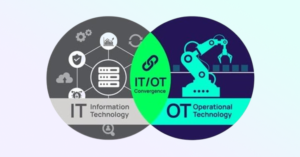How advances in AI are impacting business cybersecurity While ChatGPT and Bard have proven to be valuable tools for developers, marketers, and consumers, they also carry the risk of unintentionally exposing sensitive and confidential data. From a security point of view, it always pays to think one step ahead and about what might be coming next. One of the latest breakthroughs in AI technology is “interactive AI”. While generative AI tools can create fresh content, write code, perform calculations, and engage in human-like conversations, interactive AI can be used for tasks like geolocation and navigation or speech-to-text applications, ushering in the next phase of chatbots and digital assistants. As cybersecurity professionals, we consider the security risks and implications it presents for businesses, and we must do our best to remain in control and set clear boundaries and limitations on what the technology can do. Learnings from the generative AI phase When we think about the security implications of interactive AI, we must first consider the concerns that have previously been raised around generative AI models and LLMs. These range from ethical concerns to political and ideological biases, uncensored models, and offline functionality. Ethical concerns refer to preventing LLMs from engaging in unethical or inappropriate activities. By fine-tuning these models, developers have been able to build in policies and guardrails that ensure AI systems refuse requests for harmful or unethical content. As interactive AI evolves and has more autonomy than generative AI models, we must ensure these policies and guardrails remain to prevent AI from interacting and engaging with harmful, offensive, or illegal content. Additionally, uncensored AI chatbots have presented a significant security challenge as they operate outside the constraints of the rules and controls followed by closed models like ChatGPT. A unique feature of these models is their offline functionality which makes usage tracking extremely difficult. The lack of oversight should ring alarm bells for security teams as users can potentially engage in nefarious activities without detection. Best practice for business security If interactive AI is where we are heading in the future, many organizations will undoubtedly be considering how they can embrace the technology and whether it’s truly right for their business. That process involves thinking about the security risks it presents, so it’s imperative for businesses to work alongside IT and security teams and their employees to implement robust security measures to mitigate associated risks. This might include the following as best practice: Adopting a data-first strategy: This approach, especially within a zero-trust framework, prioritizes data security within the business. By identifying and understanding how data is stored, used, and moves across an organization and controlling who has access to that data, ensures security teams can quickly respond to threats such as unauthorized access to sensitive data. Strict access controls: With hybrid and distributed workforces, this is crucial for preventing unauthorized users from interacting with and exploiting AI systems. Alongside continuous monitoring and intelligence gathering, limiting access helps security teams identify and respond to potential security breaches in a prompt manner. This approach is more effective than outright blocking tools, which can lead to shadow IT risk and productivity losses. Collaborating with AI: On the opposite end of the scale, AI and machine learning can also significantly enhance business security and productivity. It can aid security teams by simplifying security processes and improving their effectiveness so they can focus their time where it’s most needed. For employees, adequate training around the safe and secure use of AI tools is necessary while also recognizing the inevitability of human error. Establishing clear ethical guidelines: Organizations should outline clear rules for using AI within their business. This includes addressing biases and ensuring they have built-in policies and guardrails to prevent AI systems from producing or engaging with harmful content. Although interactive AI is a significant leap in artificial intelligence, the uncharted territory means businesses must tread carefully, or they risk crossing the fine line between AI as a powerful tool and a potential risk to their organization. The reality is that AI isn’t going anywhere. To continuously innovate and stay ahead of the curve, companies must take a thoughtful and measured approach to embrace AI while protecting their bottom line.
This content was originally published here.





